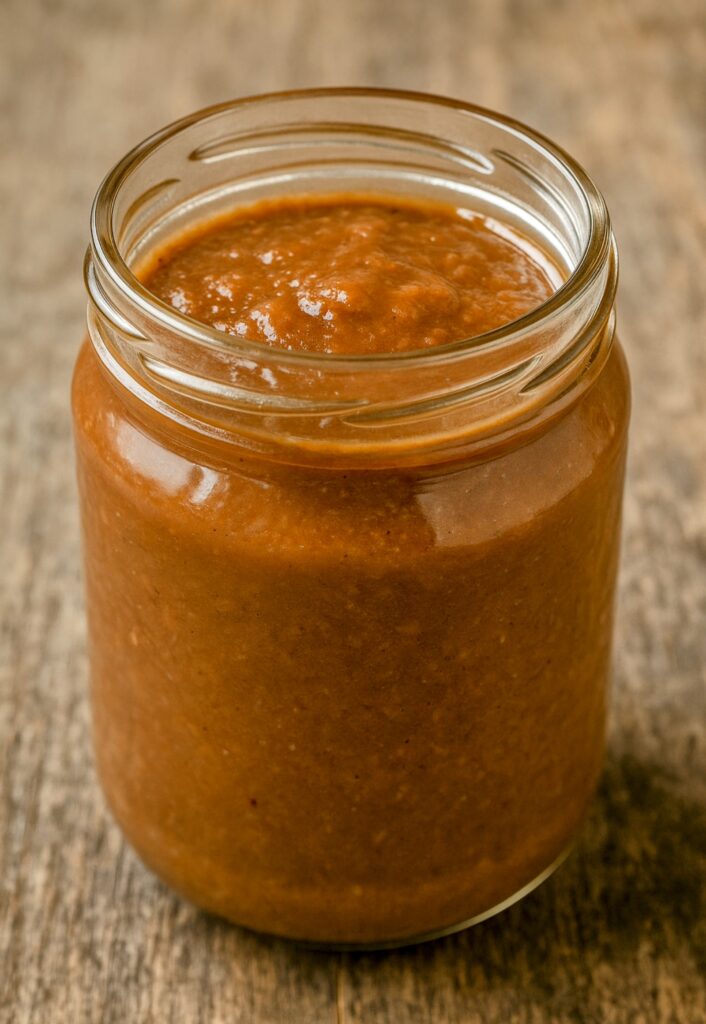In the heart of Kelantan and Terengganu, where the air is rich with the scent of lemongrass, torch ginger, and grilled fish, lies a hidden nutritional gem—budu. This fermented anchovy sauce is not just a cultural icon or an essential component of nasi kerabu, but a powerful, natural superfood for gut health. As the world turns toward fermented foods and probiotics, Malaysia’s traditional budu stands tall alongside kimchi, miso, and kefir.
What is Budu?
Budu is a traditional Malaysian condiment made by fermenting anchovies (or sometimes small fish like sardines) with salt over a period of several months. The result is a thick, savory sauce with a deep umami flavor and a complex aroma. Budu is typically eaten as a dipping sauce or mixed with lime juice, chili, onions, and sometimes grated coconut to enhance its flavor profile. It’s most famously paired with nasi kerabu, a colorful herb rice salad that highlights raw vegetables, herbs, and pickled ingredients.
Fermentation: The Secret Behind Budu’s Gut Benefits
Fermentation is a natural metabolic process that transforms raw ingredients through the activity of microbes. During the fermentation of budu, beneficial bacteria—particularly lactic acid bacteria—break down proteins and sugars, resulting in the production of bioactive compounds, short-chain fatty acids, and probiotics. These compounds have been linked to a wide range of health benefits, especially for the digestive system.
Much like kimchi or yogurt, the probiotics in budu help maintain a healthy balance of gut microbiota. A diverse and stable gut microbiome is essential for digestion, nutrient absorption, immune defense, and even mental health. Consuming fermented foods like budu regularly can repopulate the gut with beneficial bacteria, particularly after antibiotic use or a poor diet.
Scientific Research on Budu’s Nutritional and Probiotic Properties
Local universities and research institutes in Malaysia have begun to explore the scientific potential of budu, focusing particularly on its microbiological composition. Studies have confirmed the presence of various strains of lactic acid bacteria in traditional budu, including Lactobacillus plantarum, Weissella cibaria, and Pediococcus pentosaceus. These strains are known for their resilience in the human digestive tract and their ability to inhibit harmful pathogens.
One study from Universiti Malaysia Terengganu highlighted budu’s potential to act as a functional food due to its antimicrobial and antioxidant properties. The fermentation process also breaks down fish proteins into smaller peptides and amino acids, some of which have anti-inflammatory and immune-regulating effects.
Budu as a Source of Essential Nutrients
Beyond its probiotic potential, budu is also a concentrated source of essential nutrients. Here are some of the notable nutritional components found in budu:
- Protein: Budu is rich in peptides and amino acids, providing a valuable source of protein in the diet, especially for low-income households.
- Calcium: Due to the presence of anchovy bones in the fermentation process, budu contains absorbable calcium that supports bone health.
- Iodine: Like many seafood products, budu is naturally high in iodine, a mineral crucial for thyroid function and metabolism regulation.
- Omega-3 Fatty Acids: Anchovies are a good source of EPA and DHA, omega-3 fats that benefit the heart and brain.
- Vitamins: Budu contains B vitamins, particularly B12, which supports red blood cell formation and neurological health.
Gut Health and Traditional Wisdom
The health benefits of budu have been appreciated by Malaysians long before scientific studies began to confirm them. In kampung kitchens, budu is not just a condiment—it’s considered an appetite enhancer, a remedy for bloating, and a household staple. Elders often advocate for budu as a daily tonic, especially when paired with fresh herbs like ulam raja, pegaga, and daun kesum, all of which are also gut-friendly.
It’s no coincidence that traditional East Coast diets are filled with foods that promote microbial diversity and digestive health. Budu, tempoyak (fermented durian), and tapai (fermented glutinous rice) all represent a rich heritage of probiotic consumption rooted in local food practices.
Integrating Budu into the Modern Diet
For those unfamiliar with budu, it might seem intimidating due to its pungent aroma and strong flavor. However, its integration into the modern diet can be both delicious and simple. Here are a few ways to enjoy budu while reaping its health benefits:
- As a dipping sauce: Mix budu with calamansi juice, chili, shallots, and a pinch of sugar for a flavorful side dish to grilled meats or fish.
- As a salad dressing: Blend budu with lime, garlic, and a little oil for a probiotic-rich dressing over raw greens or herbs.
- In soups and stews: Add a small spoonful of budu to enhance the umami flavor of broths, especially seafood-based soups.
- Paired with brown rice or quinoa: Combine budu with whole grains and vegetables for a balanced, gut-friendly meal.
Cautions and Considerations
While budu is undeniably nutritious, it should be consumed in moderation due to its high salt content. Individuals with hypertension or those on sodium-restricted diets should be mindful of their intake. Additionally, not all commercial budu is created equal—some contain artificial additives, preservatives, or excessive monosodium glutamate (MSG). For maximum health benefits, opt for traditionally made, small-batch budu whenever possible.
Budu in the Spotlight of Modern Nutrition
As global interest in fermented foods grows, Malaysian cuisine offers a goldmine of gut-friendly options, with budu leading the charge. Its rich microbial content, nutrient density, and deep cultural roots make it more than just a condiment—it’s a symbol of ancestral wisdom and sustainable nutrition.
Nutritionists and dietitians are beginning to recognize that health isn’t only built in sterile labs or pharmaceutical labs—it’s often hidden in time-tested traditional foods. Budu stands as proof that fermentation, culture, and flavor can coexist beautifully in a single jar.

